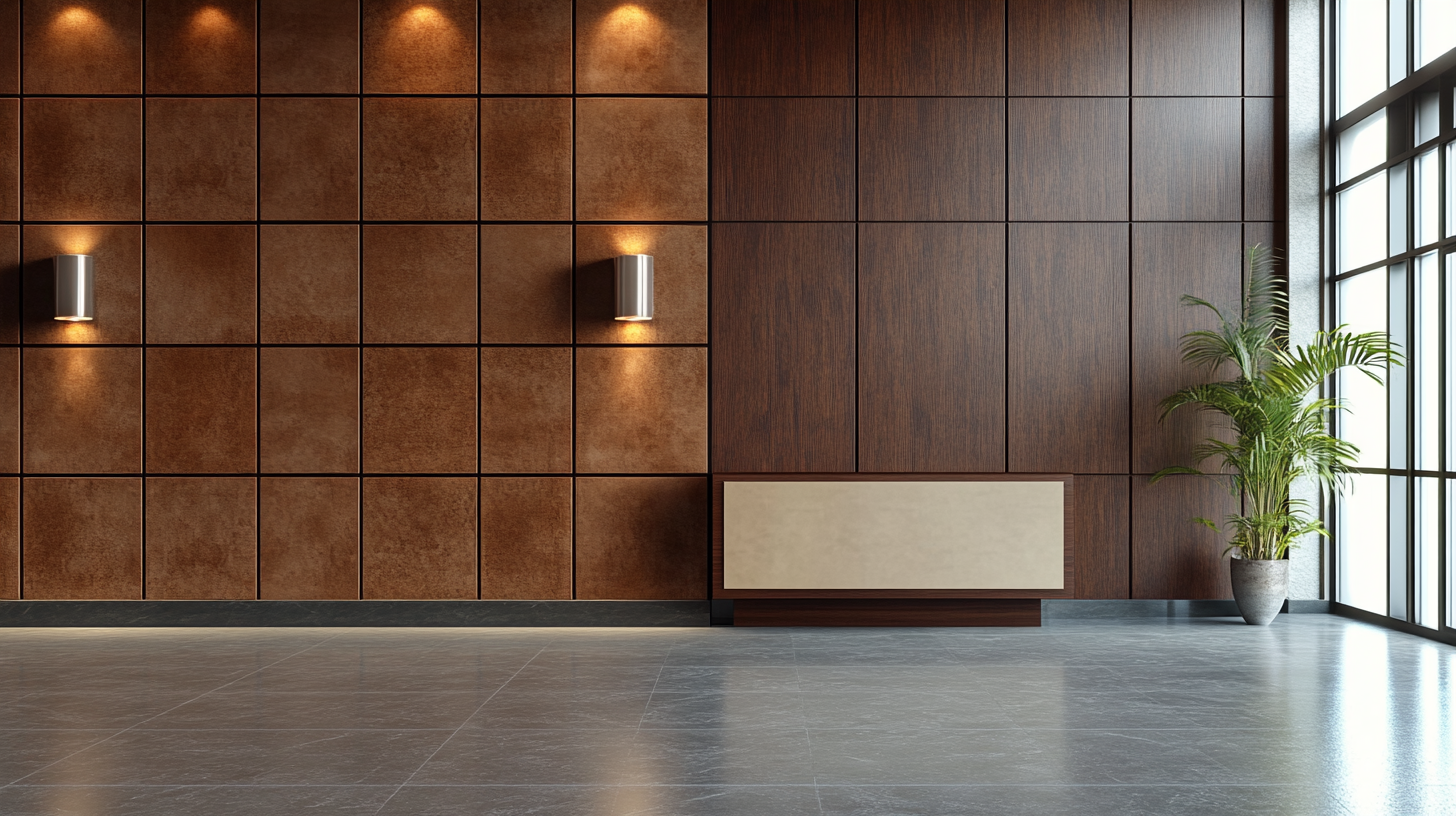Shandong Xiangying New Materials Technology Co., Ltd.
Shandong Xiangying New Materials Technology Co., Ltd.
In an increasingly global marketplace, the selection of the right wall panels is crucial for industries ranging from construction to interior design. According to recent industry reports, the global wall panel market is anticipated to reach $33.2 billion by 2026, growing at a CAGR of 5.4% from 2021 to 2026. This growth is driven by rising demand for lightweight materials and sustainable building practices that enhance energy efficiency. As companies look to source wall panels that meet diverse regulatory standards and aesthetic requirements across different regions, having a comprehensive checklist becomes essential. This ultimate guide aims to equip you with critical factors to consider when evaluating wall panels for your global sourcing needs, ensuring that you make informed decisions that align with market trends and client expectations.

As we approach 2025, the wall panel industry is witnessing a shift driven by emerging technologies that redefine sourcing decisions. Notably, the integration of smart materials and sustainable options is becoming critical. Studies show that the global demand for eco-friendly building materials is projected to grow by over 25% in the next five years. This trend suggests that sourcing professionals should prioritize wall panels that not only offer aesthetic value but also align with environmental standards, harnessing innovations such as recycled content and energy-efficient manufacturing processes.
Tip: When selecting wall panels, consider those made with advanced thermal insulation technology. Reports indicate that such panels can reduce overall energy consumption in buildings by up to 30%, making them an excellent choice for sustainability-focused projects.
Additionally, the rise of digital tools in supply chain management is enhancing the efficiency of wall panel sourcing. Technologies such as blockchain offer improved transparency and traceability, allowing stakeholders to make informed decisions. A recent survey highlighted that 70% of manufacturers are investing in digital platforms to streamline sourcing, indicating a clear industry shift towards embracing technology.
Tip: Engage with suppliers who leverage digital tools to provide real-time updates on production and delivery, which can significantly minimize delays and improve project timelines.

In today's construction industry, the demand for sustainable materials in wall panel production is more pressing than ever. A report by the World Green Building Council reveals that buildings contribute to nearly 40% of global carbon emissions, highlighting the critical need for eco-friendly solutions. By opting for sustainable wall panels made from recycled or low-impact materials, companies can significantly reduce their carbon footprint. For instance, panels made from bamboo, a renewable resource, can sequester carbon and offer a high strength-to-weight ratio, making them an excellent choice for both durability and sustainability.
Moreover, a study by Allied Market Research indicates that the global green building materials market is expected to reach $364.6 billion by 2022, growing at a compound annual growth rate (CAGR) of 11.9%. This growth signals not only a shift in consumer preferences but also a vital opportunity for manufacturers to innovate their product offerings. Incorporating sustainable wall panels into building designs is not merely a trend; it's a necessary step towards compliance with increasingly stringent environmental regulations. As sustainability becomes a cornerstone of modern architecture, the integration of eco-friendly materials will define future-ready wall systems that are both aesthetically pleasing and environmentally responsible.
| Criteria | Description | Sustainability Rating | Cost (per sq ft) |
|---|---|---|---|
| Material Type | Recycled Wood | A+ | $5.00 |
| Fire Resistance | Class A | A | $7.00 |
| Durability | Moisture Resistant | B+ | $6.50 |
| Recyclability | 100% Recyclable | A++ | $4.50 |
| Maintenance | Low Maintenance | A | $5.50 |
When considering wall panels for global sourcing, striking a balance between cost efficiency and quality is paramount. In today’s competitive market, companies often lean towards the lowest price options, but this approach can lead to compromises in product durability and performance. Investing in high-quality wall panels may require a higher upfront cost, but the long-term benefits—such as lower maintenance expenses and enhanced aesthetic appeal—can significantly outweigh these initial savings.
Moreover, sourcing strategies should prioritize transparency in the supply chain. Understanding the origin of materials and the manufacturing processes involved can help ensure that the panels not only meet quality standards but also align with ethical sourcing practices. By prioritizing quality without sacrificing cost efficiency—such as negotiating with suppliers for bulk rates or exploring alternative materials—businesses can develop a holistic sourcing strategy that supports their overall objectives while maintaining product integrity. Balancing these factors ultimately leads to smarter purchasing decisions that foster sustainability and customer satisfaction.
When considering wall panels for global sourcing needs, smart wall panels equipped with Internet of Things (IoT) technology are at the forefront of innovation. These panels not only enhance functionality but also offer unique design options that can elevate a space's aesthetics. By integrating smart features, these wall panels can be controlled remotely, allowing users to adjust lighting, temperature, and ambiance with ease.
Tip: When selecting smart wall panels, prioritize those with compatibility for your existing smart home systems. This ensures seamless integration and functionality, allowing you to fully leverage the benefits of IoT technology.
Moreover, smart wall panels often come with built-in sensors that can monitor environmental conditions such as humidity and air quality. This is particularly beneficial in spaces requiring careful climate control, ensuring both comfort and longevity of the materials used in construction.
Tip: Look for panels that offer customizable options, allowing you to tailor the design to fit your specific needs and preferences. This flexibility can significantly enhance both the visual appeal and practical use of your spaces.
This chart illustrates the importance levels of various functionalities when selecting smart wall panels for global sourcing needs. The focus is on how features like energy efficiency, user control, IoT integration, aesthetic design, and durability contribute to overall satisfaction and usability.
The wall panels industry is on the cusp of significant growth, with projections indicating a robust expansion by 2025. Market analysts forecast that as urbanization continues and construction projects rise globally, the demand for high-quality wall panels will surge. This increase is driven by various factors, including advancements in manufacturing technologies and an expanding range of materials that cater to diverse aesthetic and functional requirements.

Furthermore, sustainability is becoming a vital consideration in consumer choices, leading to a rising interest in eco-friendly wall panel options. Manufacturers are now focusing on creating sustainable products that meet both environmental standards and the aesthetic desires of consumers. With the market evolving, companies looking to source wall panels must stay informed about emerging materials and designs that align with current trends. Exploring innovative offerings can provide a competitive edge in an increasingly crowded marketplace, making informed decisions critical for success in this booming industry.
